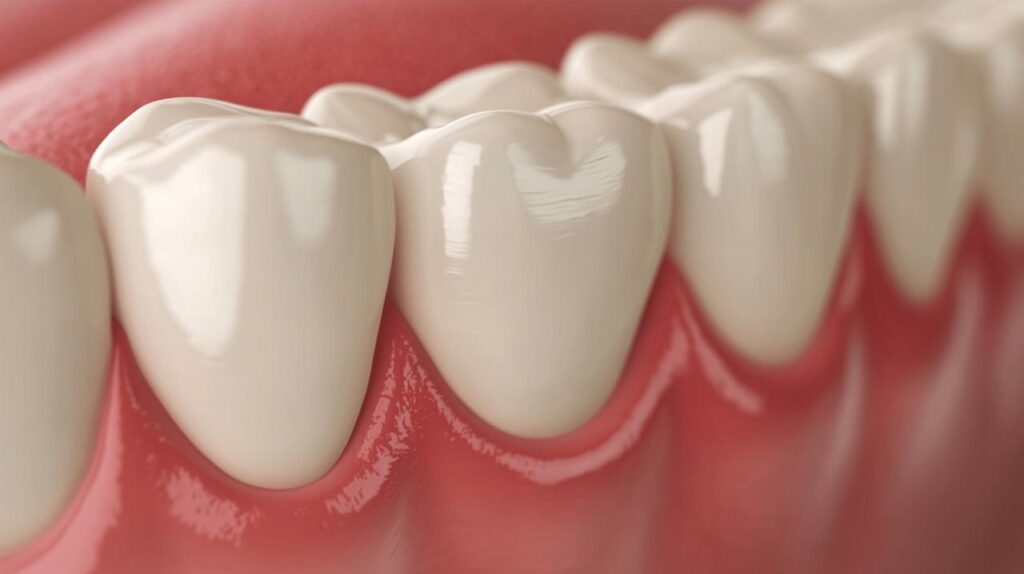Smokers are all too familiar with the tell-tale signs of their habit – the lingering smell, yellowed fingers, and that persistent cough. However, there's another consequence that often goes unnoticed until it becomes impossible to ignore: the dark line that appears between the teeth and gums, known in French as 'lisere noir entre gencive et dent'. This distinctive discolouration can be both aesthetically concerning and a potential warning sign for more serious oral health issues.
Understanding black gum lines in smokers
The dark line that forms at the junction where teeth meet gums is a common phenomenon among tobacco users. This condition, sometimes referred to as smoker's melanosis, affects approximately 5-22% of smokers. It's characterised by a noticeable darkening of the gum tissue, particularly visible around the front teeth where exposure to smoke is most concentrated. The discolouration isn't merely a cosmetic concern – it represents actual changes occurring within the oral tissues as a direct response to tobacco exposure.
What causes dark lines between teeth and gums
The primary culprits behind these black gum lines are the harmful chemicals found in tobacco products. When smoking, nicotine and tar are introduced into the oral cavity, where they can trigger increased production of melanin – the natural pigment that gives colour to our skin, hair, and eyes. In response to the irritants in tobacco, melanocytes (cells that produce melanin) become hyperactive in the gum tissue, resulting in the characteristic dark line. Unlike temporary staining that might wash away, this discolouration develops within the gum tissue itself, making it more persistent and challenging to address through normal oral hygiene practices.
Identifying smoking-related gum discolouration
Distinguishing smoking-related gum discolouration from other dental issues requires attention to several factors. The hallmark of tobacco-induced melanosis is its typical location along the front teeth, creating a visible 'black line' precisely where the gum meets the tooth surface. The discolouration tends to be fairly uniform and often follows the contours of the gumline. Unlike the redness and swelling associated with gum disease, smoker's melanosis doesn't typically cause pain or tenderness. However, it's worth noting that smokers often have multiple oral health issues simultaneously, making professional assessment crucial for accurate diagnosis and appropriate treatment planning.
The Role of Tobacco in Gum Pigmentation
Tobacco's effect on gum tissue goes beyond simple staining. The relationship between smoking and oral health is complex, involving multiple mechanisms that contribute to both cosmetic changes and structural damage to the gums and surrounding tissues. Understanding these processes helps explain why black gum lines are so prevalent among smokers and why cessation is often the most effective solution.
How cigarette chemicals affect gum tissue
When tobacco smoke enters the mouth, it delivers a cocktail of over 7,000 chemicals, many of which are toxic to oral tissues. Nicotine, perhaps the most notorious component, causes blood vessels in the gums to constrict, reducing blood flow and oxygen supply to these tissues. This vascular effect not only contributes to the darkening of gum tissue but also impairs healing and weakens the immune response within the mouth. Tar, another major component of cigarette smoke, contains numerous carcinogens that directly damage cells and can trigger the excessive melanin production responsible for the black line formation. Additionally, the heat from smoking itself can irritate delicate gum tissues, prompting inflammatory responses that further alter their appearance and health.
Comparing different tobacco products and their impact
Not all tobacco products affect the gums in identical ways. Cigarette smokers typically display the most pronounced black gum lines due to the direct and frequent exposure of oral tissues to smoke. Cigar and pipe smokers also experience gum discolouration, though sometimes with different patterns based on how the smoke is drawn into the mouth. Users of smokeless tobacco, such as chewing tobacco or snuff, develop distinctive whitish, wrinkled tissue changes at the site where the tobacco is held, often accompanied by localised gum recession. E-cigarette users may experience less gum discolouration than traditional smokers, but research is still emerging about their long-term effects on oral health. Regardless of the specific tobacco product, prolonged use invariably leads to some degree of oral tissue alteration, with the severity typically corresponding to frequency of use and duration of the habit.
Health risks associated with black gum lines
 While the aesthetic impact of black gum lines concerns many smokers, these discolourations should be viewed as visible warnings of more serious underlying health issues. The presence of this distinctive line isn't merely a cosmetic problem but rather a symptom of broader changes occurring throughout the oral cavity as a result of tobacco use.
While the aesthetic impact of black gum lines concerns many smokers, these discolourations should be viewed as visible warnings of more serious underlying health issues. The presence of this distinctive line isn't merely a cosmetic problem but rather a symptom of broader changes occurring throughout the oral cavity as a result of tobacco use.
Link between discoloured gums and periodontal disease
The relationship between smoking and gum disease is well-established in dental research. Smokers with black gum lines face significantly higher risks of developing periodontal disease, with studies showing they are nearly five times more likely to experience severe gum problems compared to non-smokers. The same mechanisms that cause the discolouration also compromise the gums' ability to fight infection and repair themselves. When periodontal disease takes hold in smokers, it typically progresses more rapidly and responds less effectively to treatment. The consequences can be devastating, with over half of advanced gum disease cases linked directly to tobacco use. This progression often leads to gum recession, bone loss, and ultimately tooth loss – explaining why current cigarette smokers have an average of 5.1 missing teeth compared to just 2.8 among non-smokers. The black line, therefore, serves as an early indicator of a mouth under significant stress from tobacco exposure.
Psychological impact of altered smile aesthetics
Beyond the physical health implications, the dark discolouration between teeth and gums can take a considerable psychological toll. Many smokers become self-conscious about their smile, sometimes developing habits to hide their teeth when speaking or smiling. This altered self-image can affect social interactions, professional opportunities, and overall quality of life. Some individuals might avoid dental check-ups due to embarrassment, inadvertently allowing underlying conditions to worsen without professional intervention. The visibility of black gum lines serves as a constant reminder of smoking habits, potentially triggering feelings of shame or regret. This psychological burden sometimes creates a difficult cycle where stress about appearance leads to increased smoking, which further worsens the very condition causing the distress.
Treatment options and prevention strategies
Addressing black gum lines requires a comprehensive approach that tackles both the underlying cause and the visible symptoms. While complete reversal isn't always possible, significant improvements can be achieved through a combination of professional interventions and personal oral care practices.
Professional dental interventions for smokers
Dental professionals offer several approaches to addressing tobacco-related gum discolouration. For smokers concerned about black gum lines, the first recommendation is typically a thorough professional cleaning and scaling to remove surface stains and tartar buildup. In more persistent cases, dental practitioners might suggest gum depigmentation procedures, which can include laser therapy, surgical approaches, or cryosurgery to reduce melanin concentration in the gums. However, it's worth noting that such cosmetic procedures address only the appearance rather than the underlying cause. Most dentists at practices like Omaha Dentistry emphasise that the most effective intervention is smoking cessation, as the black line typically begins to fade within 6-36 months after quitting tobacco. For those with advanced periodontal issues resulting from smoking, more intensive treatments including deep cleaning, antimicrobial therapy, or even surgical intervention might be necessary to restore gum health.
Daily oral care practices to minimise staining
While professional treatments are essential, daily home care plays a crucial role in managing black gum lines. Smokers should implement a rigorous oral hygiene routine that includes brushing at least twice daily with a toothpaste formulated specifically for smokers, which often contains stronger abrasives and stain-fighting ingredients. Interdental cleaning with floss or interdental brushes is particularly important as these areas are prone to both staining and bacterial accumulation. Alcohol-free antimicrobial mouthwashes can help reduce bacterial load and temporarily improve gum health, though they cannot reverse established melanosis. Staying well-hydrated helps combat the dry mouth often experienced by smokers, while limiting consumption of additional staining substances like coffee or red wine can prevent compounding the discolouration. For those not yet ready to quit smoking entirely, reducing consumption and rinsing the mouth thoroughly after smoking may help minimise ongoing damage, though these measures are significantly less effective than complete cessation.
The journey from cigarettes to black gum lines represents just one aspect of tobacco's comprehensive impact on oral health. While treatments exist to address the aesthetic concerns of 'lisere noir entre gencive et dent', the most effective approach remains smoking cessation, which not only improves appearance but dramatically reduces the risk of serious conditions including oral cancer, tooth loss, and advanced periodontal disease. With proper dental care and lifestyle changes, many smokers can restore both the health and appearance of their gums, contributing to overall wellbeing and confidence in their smile.









